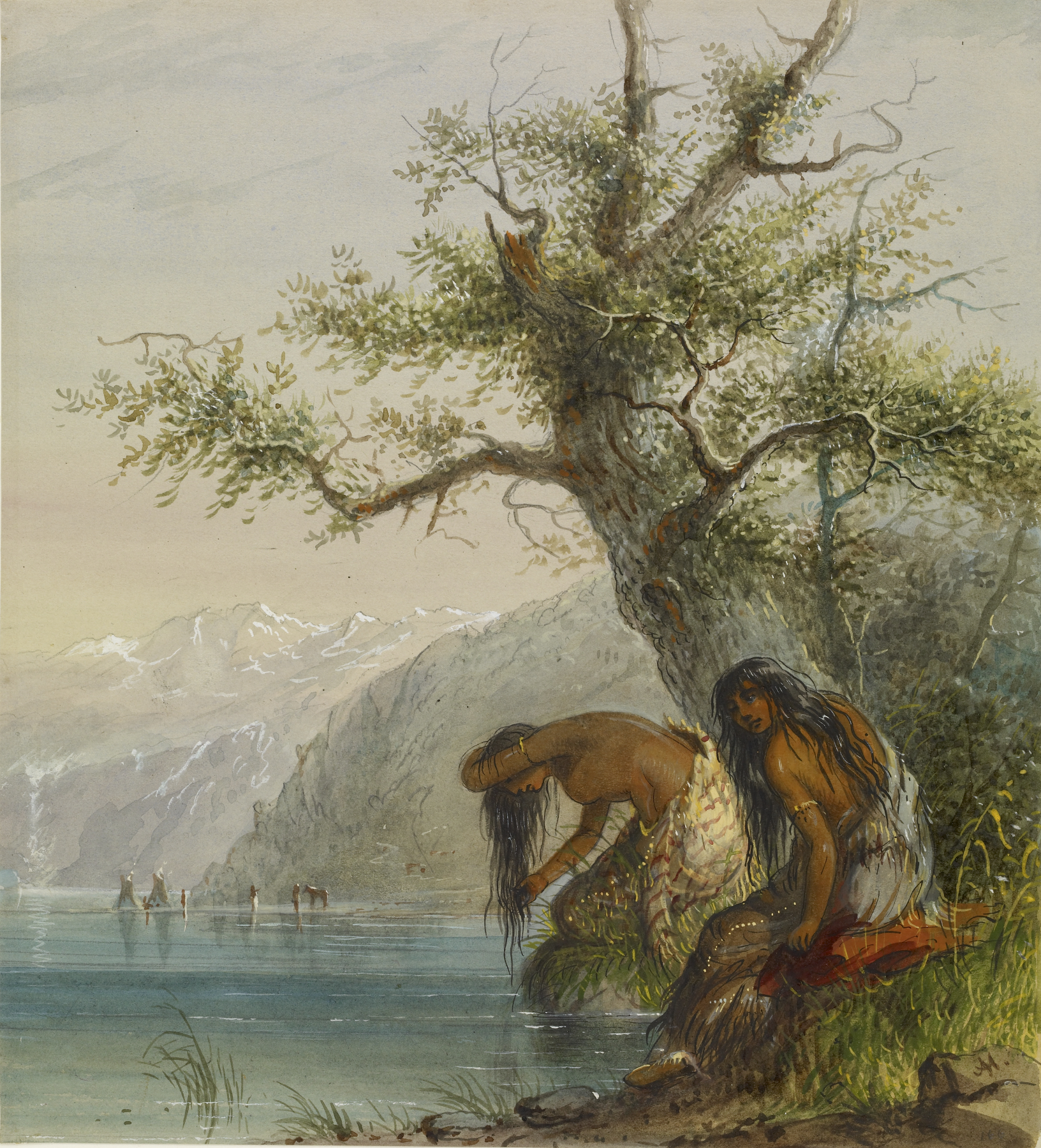Indian Toilet
(18th and 19th Centuries )
Extracts from Alfred Jacob Miller’s original text, which accompanied his images of Native Americans, are included below for reference. These words, which shaped how Miller’s contemporaries viewed the watercolors, reveal the racism and sexism embedded in 19th-century exploration and colonization of the western part of what is today the United States.
"Some few pocket mirrors carried to the mountains by our people found eager customers among the Indians;- but the men monopolized them, having abundant use for the article in painting their faces and scanning their grim countenances;- a recreation with which they seemed never to tire. In travelling they suspended them around their necks,- both as an ornament and as a matter of convenience. The poor women would have made any sacrifice to possess these baubles but not a word of expostulation or complaint was ventured. Indeed it would be of little avail. Yet fertile in expedients, the females (especially the younger) find a substitute in nature - posed on the borders of a quiet stream they may be seen watching the reflection of their dusky charms. Here with a promade of Buffalo Bear's grease, they smooth their Elfin locks of course raven-black hair,- regard with complacency the 'sparkling likeness' of youth and health." A.J. Miller, extracted from "The West of Alfred Jacob Miller" (1837).
In July 1858 William T. Walters commissioned 200 watercolors at twelve dollars apiece from Baltimore born artist Alfred Jacob Miller. These paintings were each accompanied by a descriptive text, and were delivered in installments over the next twenty-one months and ultimately were bound in three albums. Transcriptions of field-sketches drawn during the 1837 expedition that Miller had undertaken to the annual fur-trader's rendezvous in the Green River Valley (in what is now western Wyoming), these watercolors are a unique record of the closing years of the western fur trade.
Inscription
Provenance
Provenance (from the French provenir, 'to come from/forth') is the chronology of the ownership, custody, or location of a historical object. Learn more about provenance at the Walters.
William T. Walters, Baltimore, 1858-1860, by commission; Henry Walters, Baltimore, 1894, by inheritance; Walters Art Museum, 1931, by bequest.
Geographies
USA, Maryland, Baltimore (Place of Origin)
Measurements
10 1/4 x 9 1/4 in. (26 x 23.5 cm)
Credit Line
Commissioned by William T. Walters, 1858-1860
Location in Museum
Not on view
Accession Number
In libraries, galleries, museums, and archives, an accession number is a unique identifier assigned to each object in the collection.
In libraries, galleries, museums, and archives, an accession number is a unique identifier assigned to each object in the collection.
37.1940.166



